The violins pop up on eBay from time to time, described as “very rare” or “priceless.” One recent listing states that the violin for sale was “played by prisoners in the Nazi death camps of WWII” and was acquired from a man who himself had bought it “from a Jewish violinist [who] was among those arrested in the Holocaust in 1942s [sic].” A seller from Florida described the violin he was marketing as “Good for Klezmer band, Warsaw, Eastern Europe, Yiddish, Israel, historic violin, Judaica [sic]. Great piece of musical history.”
The listings don’t back up these claims with traditional provenance information, such as the names of the previous owners or the history of the instrument. Instead, what the sellers point to as evidence of the violins’ connection to the Holocaust or previous Jewish ownership is a mother-of-pearl hexagon shape inlaid on the body of the instruments. In many cases, sellers simply label these “Stars of David” or “Jewish stars” and use them to claim there is a Jewish connection.
Violin curators, provenance specialists and historians disagree. “I’ve never seen evidence that associates violins decorated with mother-of-pearl six-pointed stars with Jewish musicians, either historically or in the Nazi ghettos and camps,” says Bret Werb, musicologist and recorded sound curator at the United States Holocaust Memorial Museum (USHMM) in Washington, DC. For the past eight years, the museum has been approached by multiple members of the public offering to sell these types of violins or soliciting advice on appraising their historical or monetary value. The museum has rejected all offers to add these violins to the institution’s significant music collection.
Over the last 20 years, there has been a growing desire to rediscover, study and play music once banned by the Nazis as well as music written and performed, or sung, in the camps and ghettos during the Holocaust. That commemoration, in turn, has increased interest in these star-decorated violins. As a result, prices sellers are demanding have been markedly inflated. In the past year alone, one such violin was offered for sale at a starting price of $1,850 and another at $5,000. These are extraordinary valuations for instruments originally produced for the lower end of the violin market, typically selling for $100 to $300. But then, of course, such descriptions inevitably tug on the heartstrings of those searching for and wishing to rescue part of Europe’s lost Jewish heritage.
The problem is that while the six-pointed star has come to be intimately linked in people’s minds to Jews, research shows that these designs on violins were never considered “Stars of David” by the craftsmen who made them, nor by the wholesalers and retailers marketing them from the late 1800s to 1920s.
- Screenshot of Ebay advertisement taken on August 20, 2020 of violin for $1,850.
The violin has had a large role in modern Jewish culture—from klezmer musicians to such world-class violinists as David Oistrakh, Jascha Heifetz, Yehudi Menuhin and Itzhak Perlman. Jews’ affinity for the violin dates “from the mid-19th century,” says David Schoenbaum, author of The Violin: A Social History of the World’s Most Versatile Instrument, “when the fiddlers climbed down from their shtetl roofs and joined the modern world. It extended to at least the end of the 20th century, when Isaac Stern presided over Carnegie Hall and Jewish doctors still played string quartets in Los Angeles and Tel Aviv living rooms.” Marc Chagall’s images of shtetl violinists and popular cultural works incorporating that imagery, such as Fiddler on the Roof, have also served to enhance the perception of a strong link between Jews and violins.
That this relationship carried over into the tragic history of the Holocaust is also well documented. There are many accounts of Jews playing music, including on violins, all across Nazi-occupied Europe—in ghettos, camps and among partisan groups hiding in the forests. Additionally, Jews were frequently compelled to play music by their captors. Classical concerts and operas were performed in Theresienstadt. Almost all the major camps—Sachsenhausen, Mauthausen, Dachau, Stutthof, Neuengamme and Buchenwald, even the death camp at Auschwitz/Birkenau—had official orchestras. Prisoners were obliged to perform not only for SS officers but also at the gates while slave laborers marched to and from work, sometimes during the selection process and at executions.
Even in the concentration camps, not all the music made was coerced. In a 2007 article published in the academic journal Music & Politics entitled “Music in Concentration Camps 1933-1945,” Guido Fackler, a professor of museology at the University of Würzburg, Germany, detailed the history of music during the Nazi era: “Here, professional and amateur musicians, of different ages, genders and nationalities, played music on a regular basis; they did so on command, and on their own initiative, not infrequently on peril of their lives; they performed solo, in choirs, in chamber music groupings, in small ensembles, in jazz bands, in camp orchestras and in symphony orchestras.”
The USHMM’s archives attest to the extensive music-making throughout the Holocaust with memoirs, oral histories, films, photos, artworks, songs and musical scores. However, to date there is no evidence that categorically links violins used during, or connected with, the Holocaust to those decorated with mother-of-pearl stars.
- Ernst Dölling catalog 1900 with assorted patterns including a six-pointed star. Courtesy of Enrico Weller.
- Max Adler catalog, Erlbach (near Markneukirchen), circa 1924. Descriptions are in German, English, French and Spanish. Advertised as “Fancy Violins,” there are numerous mother-of-pearl inlaid designs to choose from, including a six-pointed star.
- Winokurow & Sinitsky catalog 1912. Violins for export to the Russian market. Front cover and inside advertisement. Courtesy of Enrico Weller.
- Winokurow & Sinitsky (St. Petersburg) catalog 1912. Close up of violin with six-pointed star—top row third from left. Courtesy of Enrico Weller.
So where do these violins come from? These distinctive decorations were a signature feature of violins made in the small area known as the Vogtland, on what is today the German and Czech border. The German town of Markneukirchen, located in the state of Saxony, and the town of Schönbach, now the Czech town of Luby, just across the border from Germany in western Bohemia, were noted for such instruments.
For generations, ethnic Germans in Schönbach were employed in violin–making, while final production took place in Markneukirchen, which served as the business and export hub for the industry. By 1900, when manufacturing was at its height, more than 200,000 instruments were produced annually. Together, both towns grew to be so significant that this district became known as the Musikwinkel, literally “music corner.”
These days it is difficult to imagine how popular violins once were. But at the beginning of the last century there was no TV, and radio was in its infancy. So after work, families often played musical instruments. Catalogs from the Vogtland were printed in German, English, French, Spanish and Russian, with illustrations and descriptions of the many violins and design options on offer. The United States in particular was a major importer.
Advertised widely as “fancy violins” in U.S. mail-order catalogs such as Rudolph Wurlitzer (started in 1856 in Cincinnati, which had a big German population), Sears Roebuck & Co, C.F. Martin & Co., Montgomery Ward and August Gemunder & Sons, these violins cost on average $8, then likely a week’s pay. Buyers could choose from a large array of patterns and designs as decoration, including statues, flags, flowers, artists’ heads, harps, swirls, eagles, Stars and Stripes, as well as four-, six- and eight-pointed mother-of-pearl inlaid stars.
Six-pointed star decorations were just one of a range of popular design elements, according to Enrico Weller, a historian living in Markneukirchen who has studied the catalogs produced by Vogtland musical instrument makers and dealers. He points to many wholesalers who advertised violins for sale decorated with what were simply described as “six-pointed stars.” Famed Markneukirchen violin maker and wholesaler Ludwig Heberlein used a six-pointed star motif, formed by two musical percussion triangles, on the front cover of his 1912 catalog. In a rare, well-preserved handwritten ledger, Theodor Stark, also from Markneukirchen, drew a design, alongside the listed materials to be used, specifically describing the image as a six-pointed “star.”
Weller says that none of the violin makers or wholesalers in the Markneukirchen region were Jewish. The violins themselves were cheap products made, from the late 1800s, for export. Indeed, a U.S. trade office was established in the town in 1893. As far as the violins with six-pointed stars are concerned, “I consider this to be an artistic ornament and not a Star of David,” says Weller. “It is remarkable that they are now receiving attention in connection with Jewish culture or the Holocaust, which originally was not intended.”
Emphasizing that such decorations bore no relation to Jews at the turn of the 1900s, Weller supplied Moment with a photo he took last year of his own local Lutheran Church of St. Nicolai, built in 1842. Its doors are adorned with exactly such stars, which survived intact throughout the Nazi era and are still there today.
- Markneukirchen violin maker and wholesaler, Heberlein, used a six-pointed star motif, formed by two musical triangles, on its 1912 catalog front cover. Courtesy of Enrico Weller.
- Ledger of Markneukirchen violin marker Theodor Stark. Hand-drawn images list the materials to be used and specifically describe the decoration as a six-pointed “star.” Translation: Directory of suppliers of the company Theodor Stark, about string and plucked instruments, bows, components, Markneukirchen, started in 1906 [entries until the 1920s], private property in Markneukirchen. Courtesy of Enrico Weller.
- The Rudolph Wurlitzer Co., Cincinnati, Ohio catalog of 1898 advertising “Fancy Violins” including one described as having “two stars on back.” Despite being six-pointed stars there is no mention of Stars of David.
So how did the connection get made? Until the late 19th century, Judaism was usually represented by the menorah. But when the First Zionist Congress was held in Basel in 1897, the six-pointed Star of David (formed by two intersecting triangles) was adopted as its emblem and became more associated with Judaism and Zionism. Its wider symbolism was then permanently established when Jews were forced to wear a yellow star during the Nazi era.
Walter Zev Feldman, a world authority on klezmer music and author of Klezmer: Music, History, and Memory, is surprised that any seller would suggest a link between these violins and klezmer music. “I have never heard of such decorations made for violins played by klezmorim anywhere,” he says.
There are violins (without stars) that have well-documented Holocaust histories. The USHMM’s collection includes a violin once owned by Henry Rosner, a professional Jewish violinist from Krakow, which he had played in the Płaszów forced labor camp for the commandant Amon Goeth. Oskar Schindler saved the Rosner family, and when the violin was confiscated from Rosner at the Gross-Rosen transit camp, Schindler rescued it.
Also at the USHMM are two violins owned by brothers Henry and David Baigelman, which they played in the Łódź ghetto in Poland. In 1944 the violins were hidden in an attic and recovered when the Soviets liberated the city in January 1945.
Yad Vashem, Israel’s official Holocaust Remembrance Center, has exhibited a violin owned by Parisian teenager Pierre Wolkowicz, who was deported, along with his mother, in August 1942. The violin remained in the family apartment and was recovered by Pierre’s father, who survived Auschwitz.
As for the violins with inlaid mother-of-pearl six-pointed stars, Lawrence Cavalieri, a musician, violin dealer and appraiser, says those offered online have “little or no value” and that he has never seen one for sale at European auctions of professional-quality violins. While he is aware that some people are tempted to purchase these instruments, be they amateur violinists, collectors of Judaica or those simply wishing to acquire an example of turn-of-the-19th/early-20th-century European craftsmanship, Cavalieri warns that “when making a purchase off the web, a healthy degree of skepticism is required.” As for sellers who construct provenance histories linking mother-of-pearl six-pointed-star-decorated violins to Jews, klezmer players or Holocaust death camps, Cavalieri says, they are “at best, indulging in wishful thinking and, at worst, exploitative.”
- Six-pointed stars on the doors of the Lutheran Church of St. Nicolai, Markneukirchen in 2020. Copyright of Enrico Weller.
- Enrico Weller, together with co-authors Dirk Arzig and Mario Weller, published in 2015 Historical Catalogues — Masterpieces of German Instrument Making.

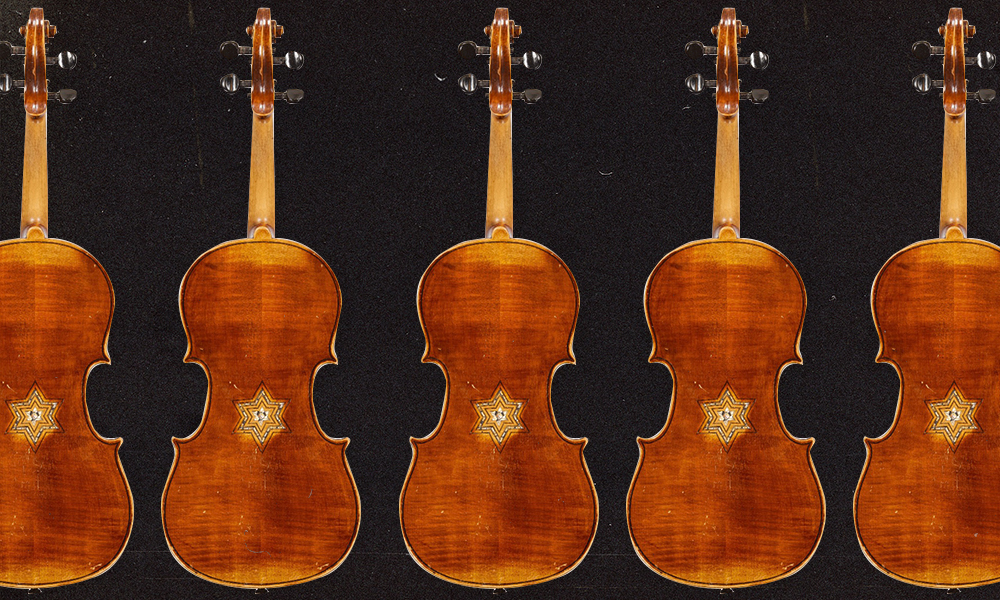
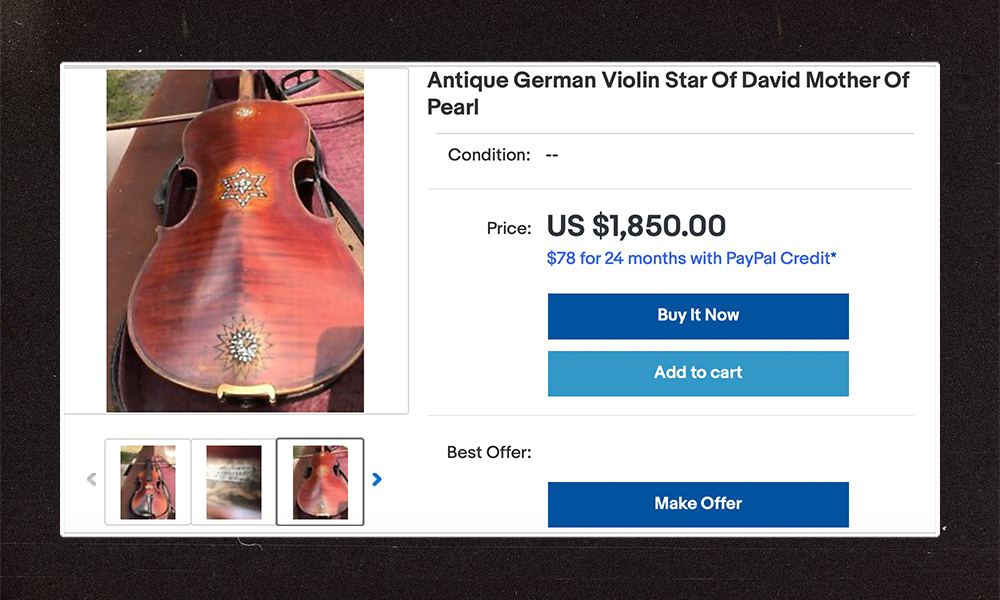


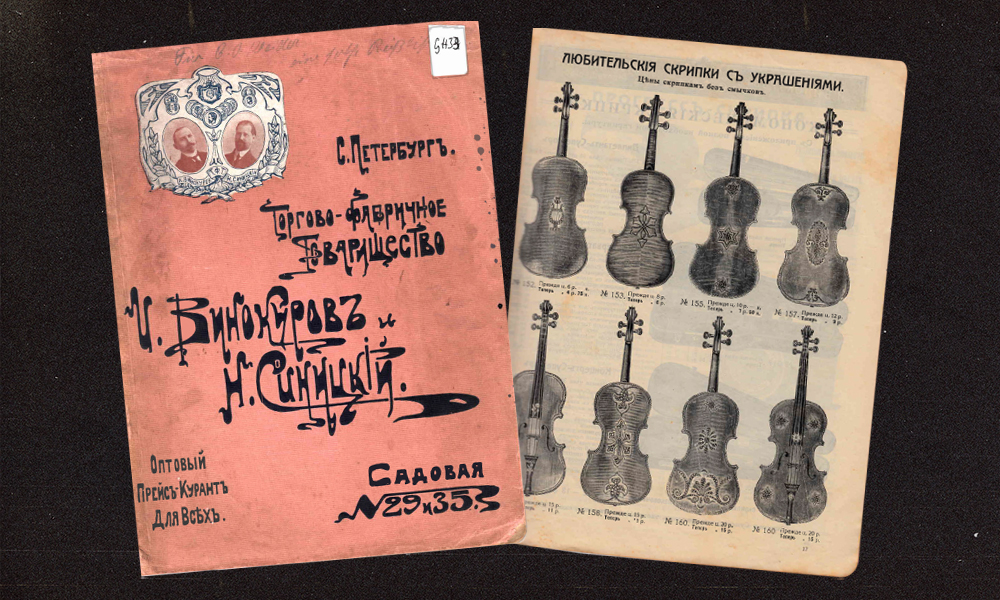

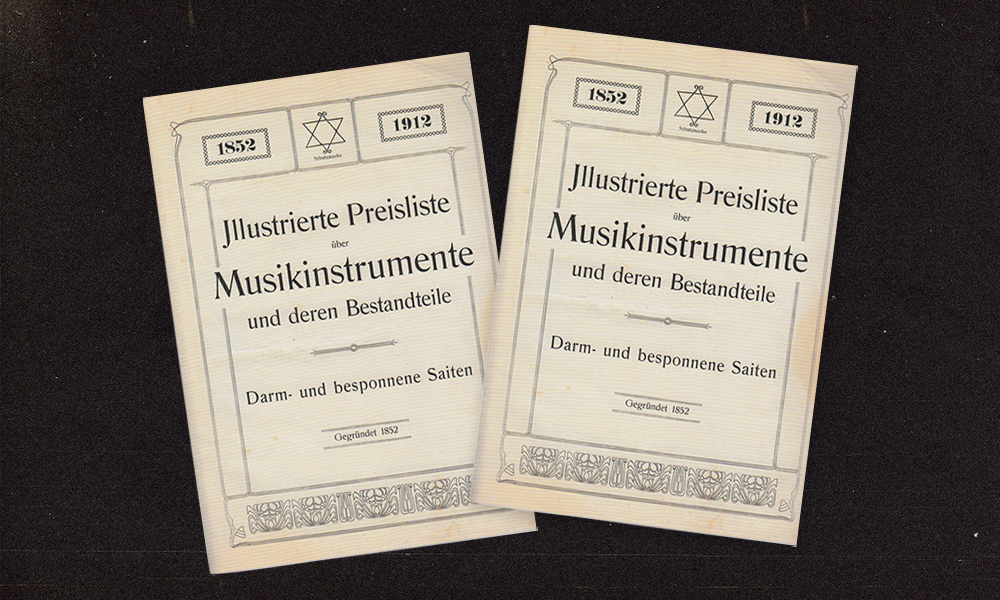

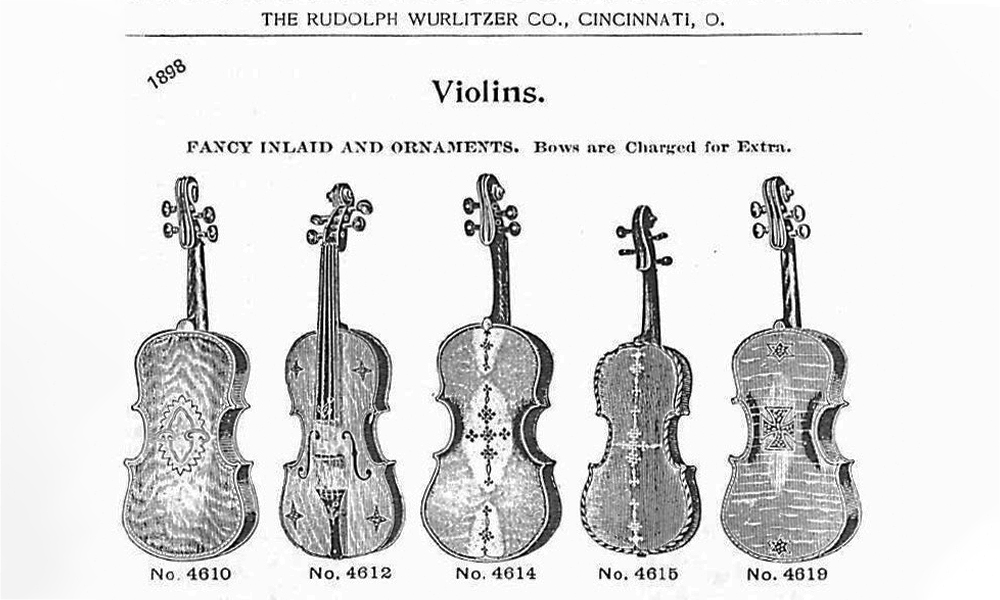

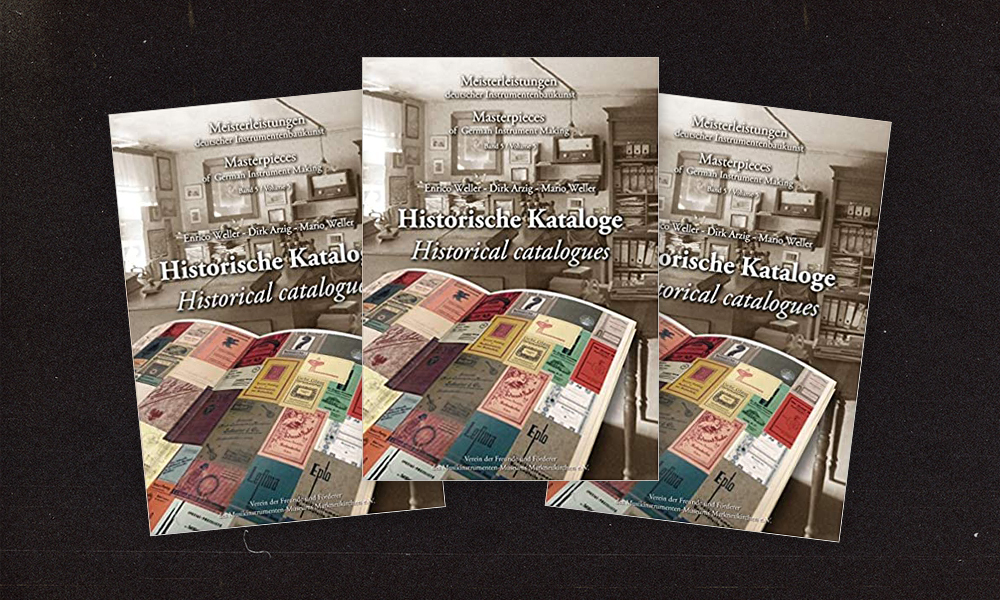




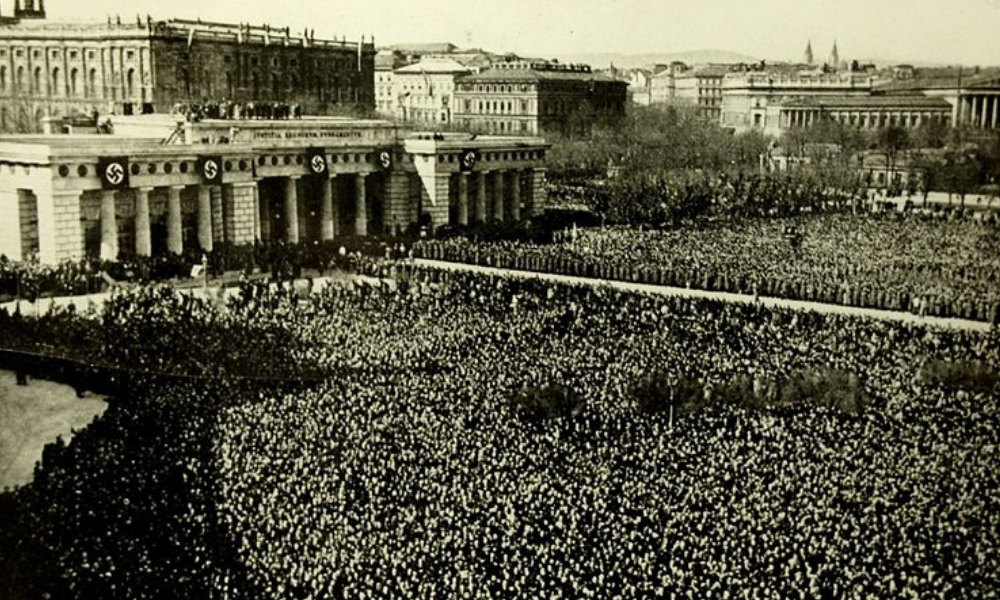
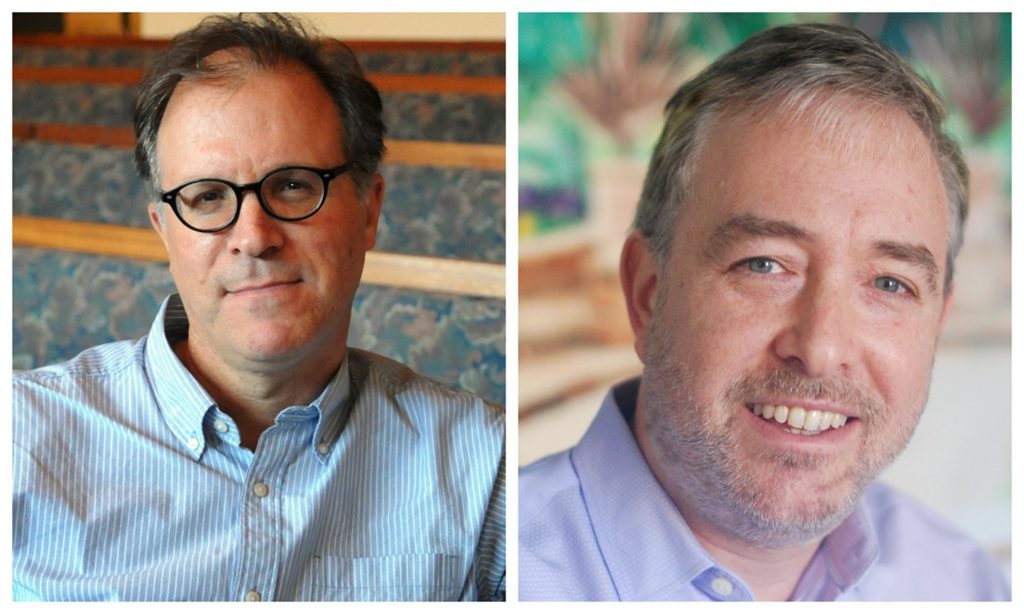
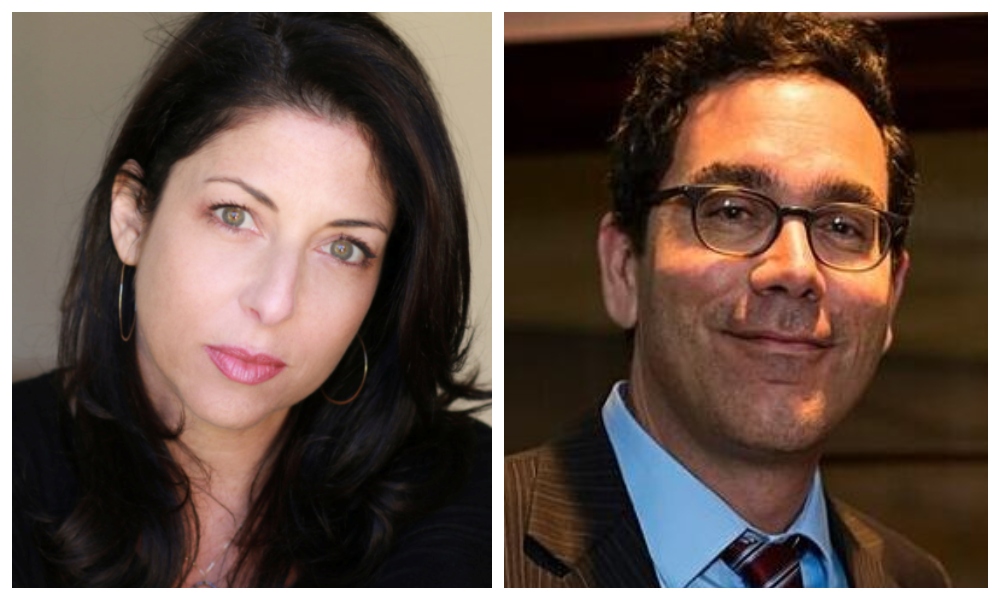


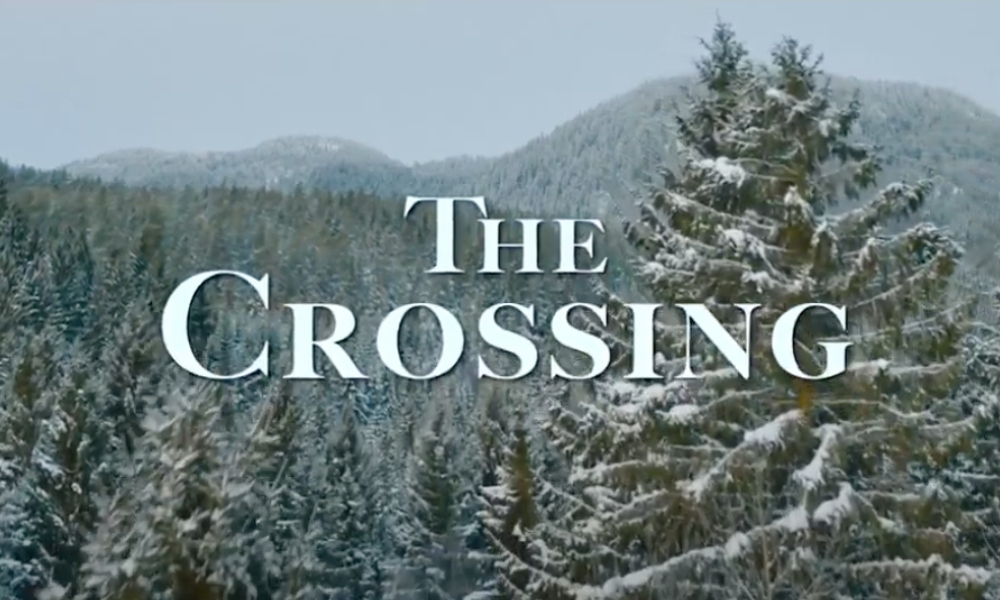


A lot of Protestant churches in Ontario, Canada had one window that contained a Jewish star. I thought it was meant for Jesus to recognize his family crest of the House of David on the building when he returns.
A truly eye-opening, carefully researched article by Dina Gold, which reads like a detective story. “Buyer beware” when it comes to violins with inlaid stars! The most astonishing image, aside from the musical instrument catalogs, is the decoration of a six-pointed star (like a real “star of David,” formed of two intersecting triangles) on the door of a Lutheran church in Germany. Now we need a follow-up piece: how exactly did the Star of David become the foremost Jewish emblem? Gold tells us when, but not why .
What does this say about the currently travelling ‘Violins of Hope’ exhibition? I was surprised not to see this mentioned in the article.
I paid to see the Violins of Hope exhibition in Phoenix with my mother, and was very moved. After reading this extensively researched essay, I now wonder if I was manipulated and fed a false story. I appreciate the beauty of these violins and the emotional strings they tug, but if they aren’t what Violins of Hope says they are, do they have any place in this kind of tribute? Does the presence of such violins “water down” the significance of the instruments and musicians who can legitimately be connected to the Holocaust? What is the point of including these violins with inlaid stars if they are not authentic?